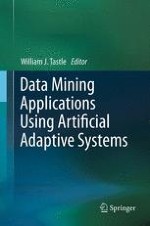2013 | OriginalPaper | Chapter
4. Semantics of Point Spaces Through the Topological Weighted Centroid and Other Mathematical Quantities: Theory and Applications
Authors : Massimo Buscema, Marco Breda, Enzo Grossi, Luigi Catzola, Pier Luigi Sacco
Published in: Data Mining Applications Using Artificial Adaptive Systems
Publisher: Springer New York
Activate our intelligent search to find suitable subject content or patents.
Select sections of text to find matching patents with Artificial Intelligence. powered by
Select sections of text to find additional relevant content using AI-assisted search. powered by
